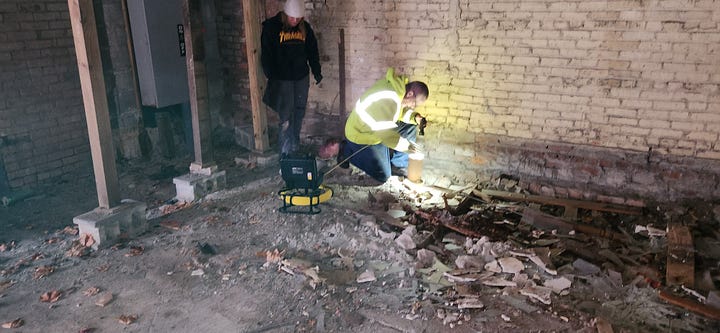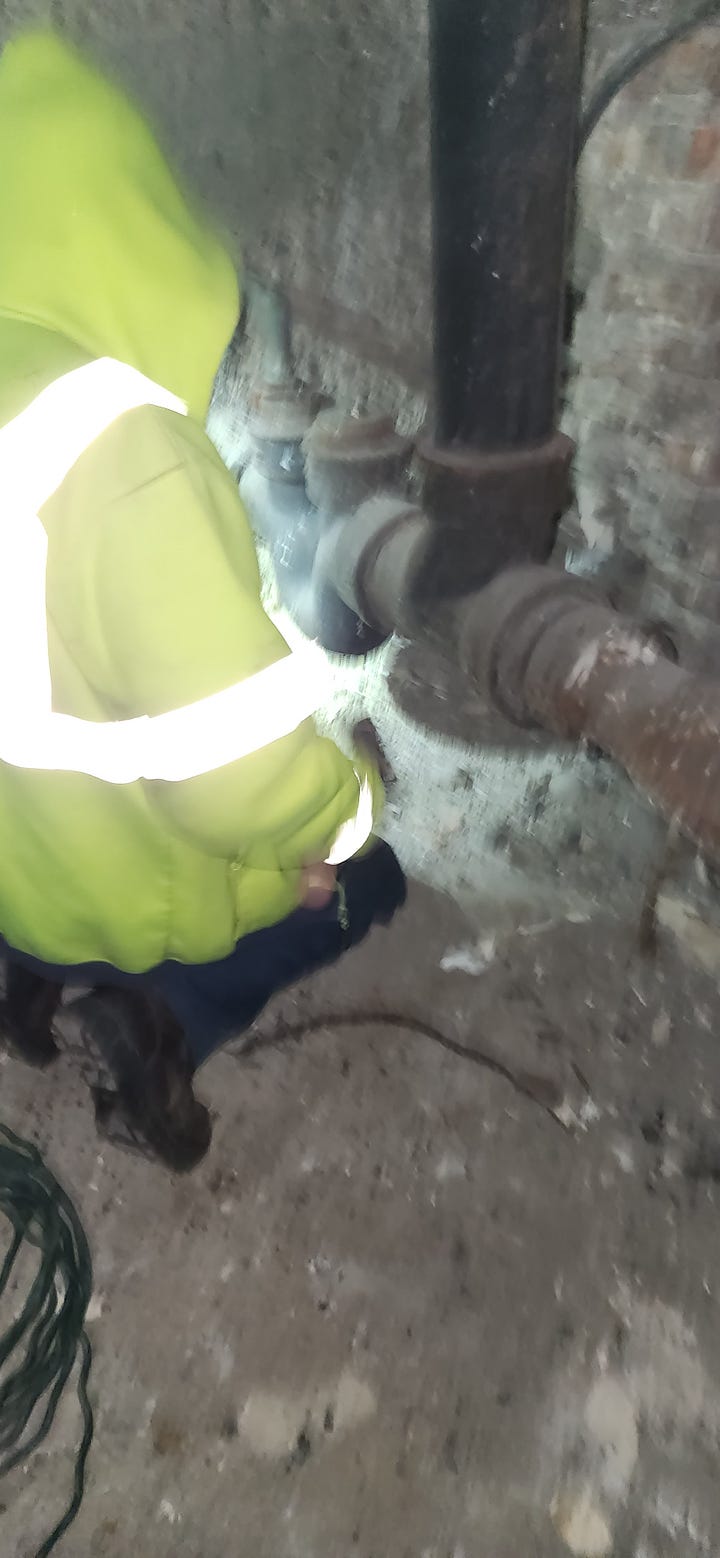Avoiding Disaster: A sewer main is an insurance policy
As a property owner with some experience under your belt, you quickly come to learn that the various systems and components of your property have vastly different lifespans. Boilers and furnaces may last a couple of decades, electrical systems can endure for several decades, and siding might stretch to a century. Each of these building systems is exceptionally expensive to replace. The primary reason? These systems are buried, hidden within walls, floors, and ceilings. To fix them, you have to tear through layers of your property, and once the repairs are done, you’re left with additional costs to restore what you’ve disrupted.
The pipes that bring fresh water to your property and those that carry it away when you're done with it fall into this category. The fresh water and sewer systems are some of the most critical components of a building, yet they’re often the ones we think about the least. Beyond being essential for habitability, these systems interact with nearly every structural element of the building, from the foundation penetrations to the roof openings and everything in between. Replacing these systems frequently requires ripping apart other parts of the property, adding to the complexity and cost.
In most modern buildings, sewer and water mains are buried under the lowest floor, often beneath a thick concrete slab that serves as the foundation or the floor of a functional living space. But before the 20th century, it wasn’t uncommon to construct basements with simple dirt floors, built with the expectation that flooding would occur during heavy rains. At the time, keeping water out of these spaces was cost-prohibitive, so basements were considered sacrificial spaces—primarily meant for storage, not habitation.
As time passed and buildings aged into the modern era, new owners increasingly sought to make these basement spaces usable by improving drainage, waterproofing, and installing concrete slab floors. However, these updates complicated maintenance. What was once a simple sewer main replacement requiring little more than a shovel became a demolition-heavy operation, involving cutting through several inches of concrete slab, along with whatever finished flooring lay on top. In the worst-case scenario, you might even have to demolish a fully built-out basement bathroom just to reach the broken sewer main.
Understanding these potential costs is critical when renovating older properties. Leaving an aging sewer main in place and building new construction on top of it is a gamble where the odds are stacked against you. In our case, we faced such a dilemma. Upon inspection, we found a 4-inch cast iron sewer main and trap when we first assessed the property. While the pipe could have been as young as five years or as old as a hundred, we knew it made sense to call in a plumber equipped with a specialized camera to assess its condition.
After clearing the line with a high-powered water jet, the plumber inserted a camera and pushed it over sixty feet to the main sewer line beneath the street. Along the way, the inspection revealed the cast iron line was in fair condition, but we also discovered a break in the pipe and a transition to a 6-inch terra cotta line in the last few feet leading to the street. The verdict was clear: the useful life of this sewer main had come to an end.


While there are cost-cutting methods to patch or repair an existing main, we had to consider our plans for extensive new construction above this line. Anything short of installing a brand-new, upgraded sewer main seemed like an invitation for future problems. For this project, we opted for a new 6-inch sewer main, and since we were already undertaking the significant work of excavating the basement, yard, and street, we decided to replace the water main as well.
With the decision to install new lines made, we turned to the next challenge: planning the installation to minimize costs. We began by reaching out to a range of plumbers specializing in sewer and water mains. Our goal was twofold: gather competitive bids and seek expert advice. One of the trickiest aspects of this process was evaluating the vendors themselves. While many are upstanding professionals offering sound guidance, a smaller subset may try to oversell unnecessary services to inflate their profit margins. This makes assessing the honesty of a vendor’s bid a critical step in the process.
To ensure a fair comparison between proposals, our architect provided a schematic of the project for the vendors to review. In our case, the existing sewer was unusually deep. One vendor quoted a $32,000 bid to replace the main at its current depth. Another vendor suggested abandoning and sealing the old main and installing a new one just below the frost line, a perfectly functional and code-compliant solution, for $21,000. Both options met the project’s requirements, but the price difference highlighted the importance of vendor honesty. The higher-priced bid included unnecessary work, an all-too-common strategy used to take advantage of uninformed customers.
Selecting plumbing and sewer vendors is an art that extends far beyond comparing price tags. It requires a blend of technical savvy and practical judgment, all while cultivating a discerning eye for integrity and expertise. As we experienced through past project journeys, the stakes of poor vendor selection are tangible. It’s not just about the difference in the upfront cost; poor execution can create recurring problems that become a constant drag on profitability.
Most of us don’t possess the technical acumen to grasp the nuances of plumbing and sewer systems, enough to distinguish between necessary work and oversold solutions. Ultimately, what drives success is the ability to spot the professionals who prioritize transparency and excellence over profit-padding. Taking the time to speak with a handful of competing vendors will provide you the opportunity to talk with each, ask pointed questions, and try to compile the ideal solution with all the vendors’ inputs.
The added layer of learning from in-person on-site visits, adds critical information when evaluating vendors’ bids. Honesty in a bid is priceless; it speaks to a vendor’s commitment to quality and their respect for the client's intelligence. With this toolkit of technical knowledge, critical evaluation, and trust-building, a developer isn’t just selecting a vendor; they’re laying the groundwork for a successful project and a sound investment in their property's future.
If you've found value in these insights and want to continue your journey of real estate wisdom, please subscribe to The Property Alchemist.
Don't let your real estate dreams remain just dreams. Empower yourself with the knowledge and insights that can turn your investment visions into concrete reality. Subscribe to The Property Alchemist today and take the first step towards becoming a Master of Real Estate alchemy. Your next successful project is just a subscription away!




